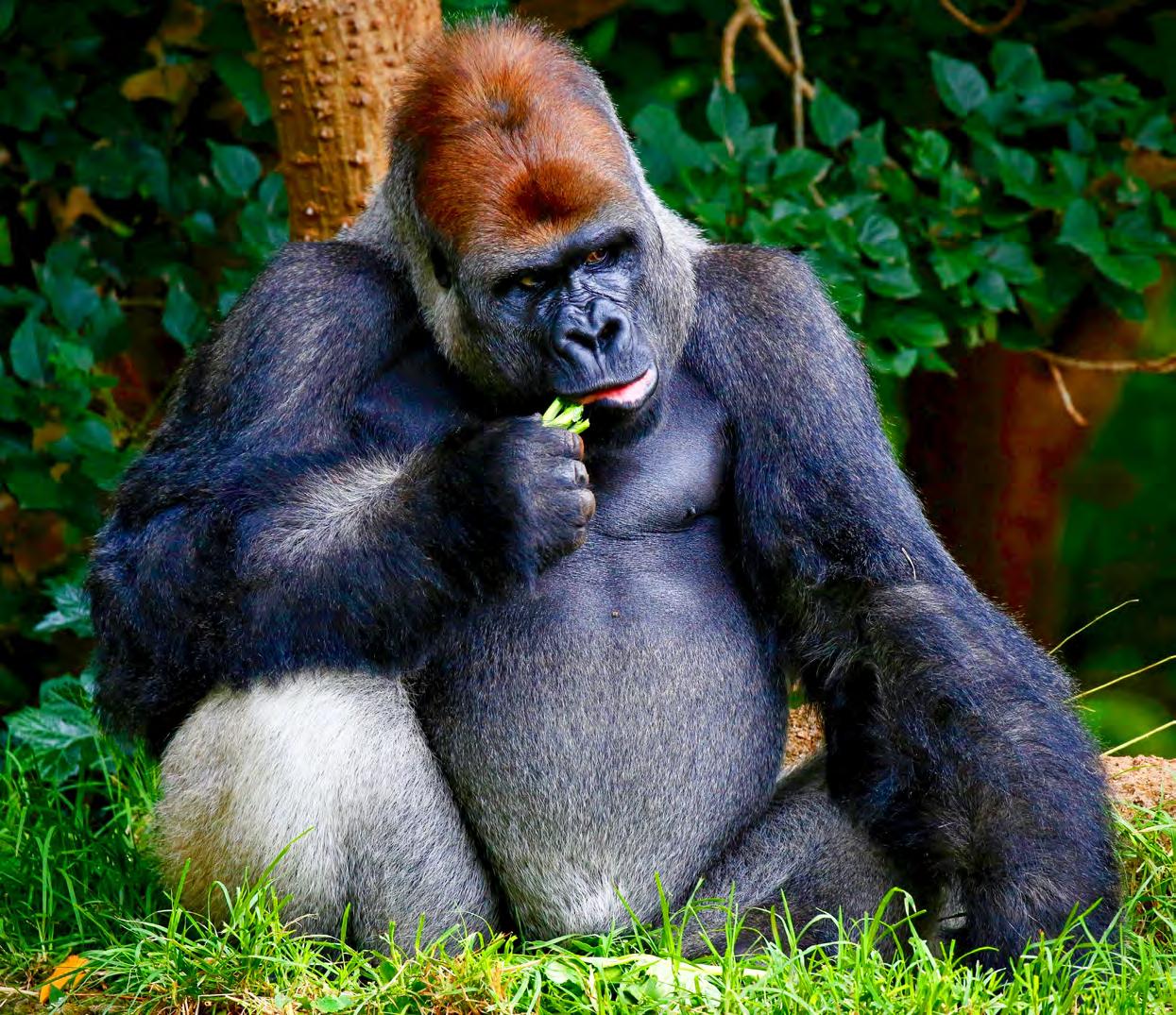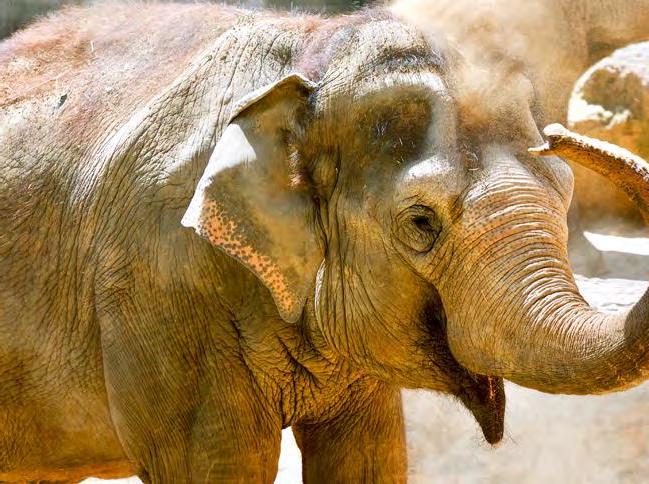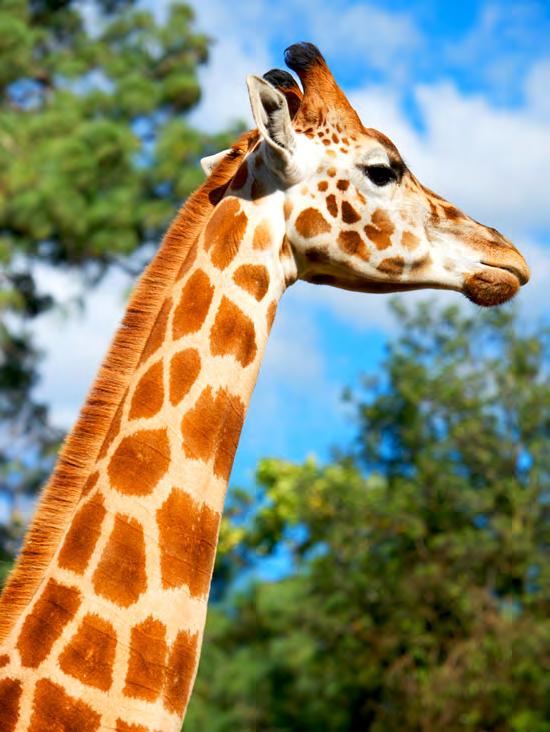
3 minute read
Feeding frenzy
Feeding FRENZY From vegetarian gorillas to otters with a taste for rainbow trout, the animals at Melbourne Zoo are kept well-fed and happy. Here’s how.
WORDS Jo Davy
MEK KAPAH
WEIGHT 3,360 KG

WEEKLY DIET
31kg vegetables, 23kg starchy vegetables, 70kg greens, 17kg lucerne hay, 35kg oaten hay, 42kg teff, 21 branches, 25kg training treats, 8.5 lucerne hay cubes and 10kg bran mixture.
OTANA
WEIGHT 180 KG
WEEKLY DIET 90kg vegetables and greens, 7kg pellets and 14 pieces of browse.
f you think your grocery shopping list is getting out of hand, spare a thought for Melbourne Zoo’s Food Store Manager Colin Van Dyk. Each week, Melbourne Zoo’s I 3,197 animals munch their way through about three tonnes of fruit and vegetables, 172 kilograms of meat, 40 hay bales, 6,000 mealworms and 150 yabbies — and it’s Colin’s responsibility to keep the five kitchens stocked.
Every animal has a specific diet developed by the Zoo’s vet team to make sure their individual nutritional needs are met.
Otana, the silverback Western Lowland Gorilla, chows down on about 90 kilograms of vegetables and greens per week, as well as pellets and leafy
NDIDI

WEIGHT 180 KG
WEEKLY DIET
30kg meat (five days of 5.5kg and two days of 1.5kg lean meat cut into small chunks for training).
browse. Meanwhile, Sam the Platypus enjoys a more modest diet of 2.5 kilograms of yabbies, plus a selection of worms and fly pupae.
“My role is to make sure the different departments have all the ingredients they need to make up the animals’ diets,” Colin says.
Zoos Victoria tries to source food locally as much as possible, which means Colin is up early four mornings a week to collect fruit and vegetable donations from suppliers at Melbourne Market in Epping. The Zoo also receives regular deliveries of fresh produce throughout the week.
Meat is another staple of many animals’ diets — Ndidi the African Lion gets through 30 kilograms a week — and Colin and his team are careful to source all animal products from operations that adhere to RSPCA guidelines around welfare and humane slaughter.
Hay, fish, insects and seeds make up the bulk of the shopping list, but there are also some specialty items to source: rainbow trout for the otters and goat for the Zoo’s reticulated python. Some food, such as bamboo for the Red Pandas and plants for the butterflies, are even grown on site.
“We look at food miles and try to source locally where we can, but with some of the special diets it just isn’t possible,” Colin says. What does it take to feed a hungry group of gorillas? Watch our Keepers prepping a gorilla feast.
Watch it here
The Keepers are responsible for food preparation, which for some of the bigger appetites can be a full-time job in itself.
“Our elephant herd would eat the most of any animal at Melbourne Zoo,” Colin says. “The Keepers use their food as enrichment and provide it in different ways to keep them busy for a big part of the day.”
Feeding time while the zoo was closed due to public health restrictions presented new challenges for Melbourne Zoo, both in sourcing and in delivering food for the animals. Keepers have been maintaining rigorous hygiene practices so that they can continue to distribute food to the animals. ZN
NAKURU

WEIGHT 1,000 KG
WEEKLY DIET
Leaves and bark from 42 pieces of browse, 50kg Lucerne hay, 14kg giraffe pellets, 3.5kg oats, 7kg greens and a few carrots for training.
SAM
WEIGHT 2 KG

WEEKLY DIET
2.5kg yabbies, 1.4kg blackworms, 700g compost/tiger worms, 350g mealworms and 140g fly pupae.
fyi
VISIT THE ANIMALS
Visit the animals at Melbourne Zoo to see them munching away on their delicious meals. Visit zoo.org.au to book your free member tickets.







